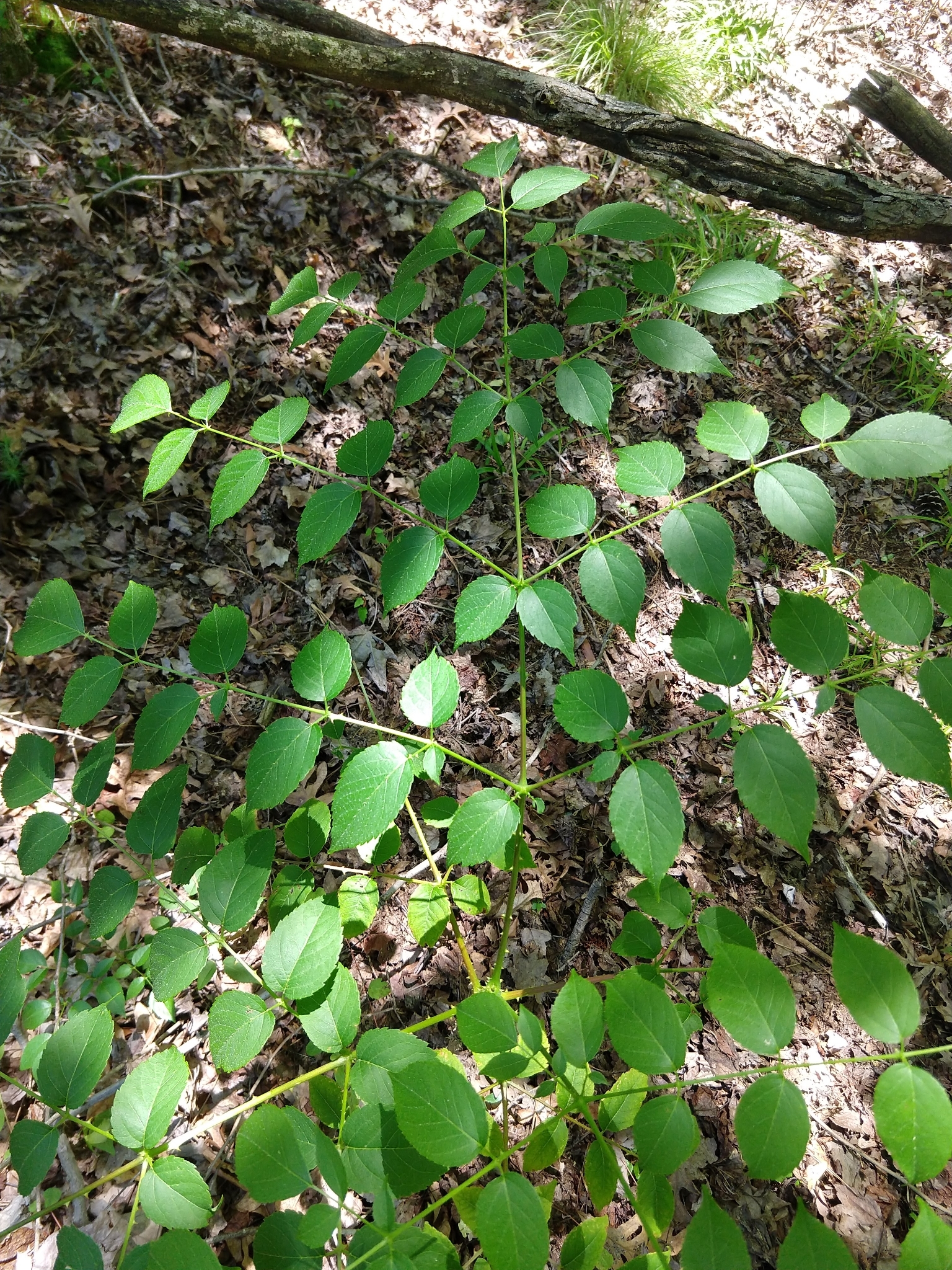Map Snapshot







20 Records
Status
A new introduction to Maryland's flora. Seems to be spreading in the Piedmont region.
Description
Very similar to the native Devil's Walkingstick. Look at the lateral veins on the leaf. They stop short of the leaf margin. This distinguishes Devil's Walkingstick from Japanese Aralia, which has lateral veins that go all the way to the leaf margin (B. Harms).
Seasonality Snapshot
Source: Wikipedia
| Aralia elata | |
|---|---|

| |
| Scientific classification | |
| Kingdom: | Plantae |
| Clade: | Tracheophytes |
| Clade: | Angiosperms |
| Clade: | Eudicots |
| Clade: | Asterids |
| Order: | Apiales |
| Family: | Araliaceae |
| Genus: | Aralia |
| Species: | A. elata
|
| Binomial name | |
| Aralia elata | |
Aralia elata, also known as the Japanese angelica tree,[2] Chinese angelica-tree,[3] or Korean angelica-tree,[4] is a species of woody plant in the family Araliaceae native to eastern Asia (in Russia, China, Taiwan, the Korean Peninsula, and Japan).
Description
[edit]It is an upright deciduous small tree or shrub growing up to 10 m (33 ft) in height.[5]
The bark is rough and gray with prickles. The leaves are alternate, large, 60–120 cm long, and double pinnate. The flowers are produced in large umbels in late summer, each flower small and white. The fruit is a small black drupe.
Aralia elata is closely related to the American species Aralia spinosa, with which it is easily confused. A. elata can be differentiated by having its inflorescence on a horizontal axis.
Cultivation
[edit]Aralia elata is cultivated, often in a variegated form, for its exotic appearance. It prefers deep loamy soils in partial shade, but will grow in poorer soils and in full sun. The cultivars 'Variegata'[6] and 'Aureovariegata'[7] have gained the Royal Horticultural Society's Award of Garden Merit.
Culinary uses
[edit]Japan
[edit]
In Japan, the shoots are eaten in the spring. They are picked from the end of the branches and are commonly fried in a tempura batter.[8] They can also be blanched or stir fried, among other methods.
Korea
[edit]
In Korea, young shoots are harvested during a month, from early April to early May, when they are soft and fragrant. In Korean cuisine, the shoots are commonly eaten blanched, pickled, pan-fried, or deep-fried.[9]
-
Blanched angelica-tree shoot
-
Angelica-tree shoot fritter and glutinous rice pancake
-
Pan-fried angelica-tree shoot and eggplant
-
Pan-fried angelica-tree shoot
-
Mullet and angelica-tree shoot salad with soybean paste and mayonnaise dressing
Invasive species
[edit]
The tree was introduced into the United States in 1830. Birds like to eat the fruits, and are spreading its seeds, allowing the tree to expand its range as an invasive species in the northeastern United States.[10]
References
[edit]- ^ Botanic Gardens Conservation International (BGCI) & IUCN SSC Global Tree Specialist Group. 2018. Aralia elata. The IUCN Red List of Threatened Species 2018: e.T135795730A135795732. https://dx.doi.org/10.2305/IUCN.UK.2018-2.RLTS.T135795730A135795732.en. Accessed on 24 October 2024.
- ^ "Angelica elata". www.rhs.org. Royal Horticultural Society. Retrieved 5 May 2020.
- ^ "Aralia elata". Germplasm Resources Information Network. Agricultural Research Service, United States Department of Agriculture.
- ^ Korea National Arboretum (2015). English Names for Korean Native Plants (PDF). Pocheon: National Arboretum. p. 357. ISBN 978-89-97450-98-5. Archived from the original (PDF) on 25 May 2017. Retrieved 6 December 2016 – via Korea Forest Service.
- ^ "RHS Plant Selector - Aralia elata". Retrieved 29 May 2013.
- ^ "Aralia elata 'Variegata'". RHS. Retrieved 12 April 2020.
- ^ "Aralia elata 'Aureovariegata'". RHS. Retrieved 12 April 2020.
- ^ Brussell, David Eric (2004). "Araliaceae Species Used for Culinary and Medicinal Purposes in Niigata-Ken, Japan". Economic Botany. 58 (4): 736–739. doi:10.1663/0013-0001(2004)058[0736:ASUFCA]2.0.CO;2. ISSN 0013-0001. JSTOR 4256887.
- ^ Hong, Jungha; Gruda, Nazim S. (2020). "The Potential of Introduction of Asian Vegetables in Europe". Horticulturae. 6 (3): 38. doi:10.3390/horticulturae6030038. ISSN 2311-7524.
- ^ U.S. Dept. of Agriculture: Map of distribution in U.S. and Canada
















